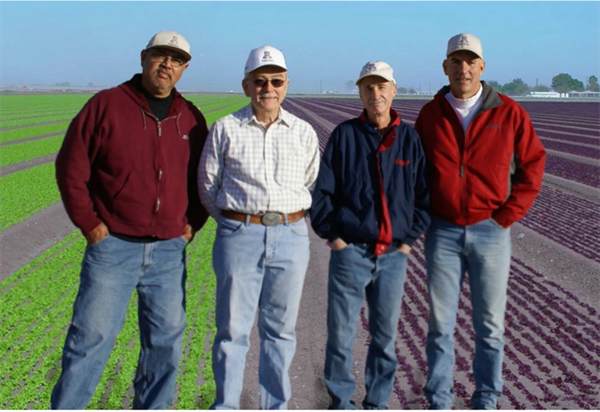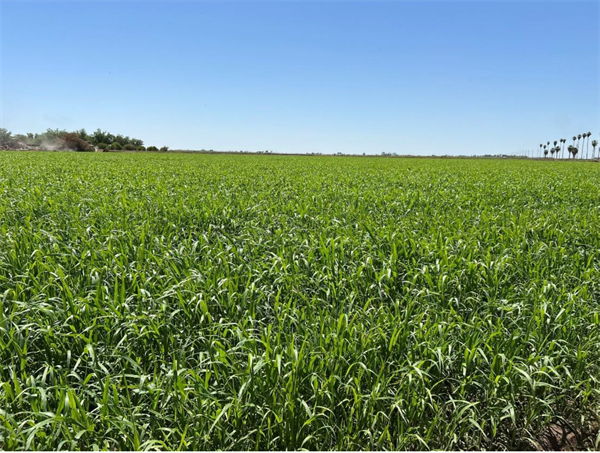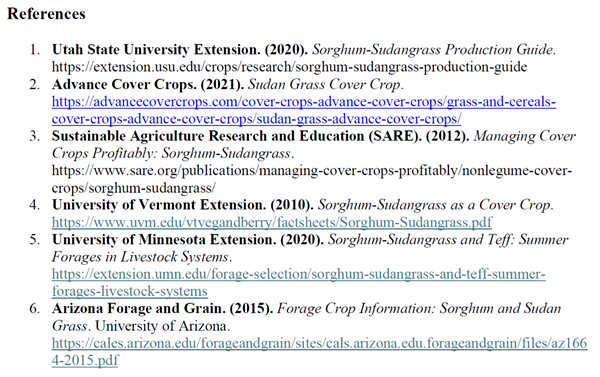
In several previous issues of this UA Vegetable IPM Newsletter (Silvertooth a,b, and c; 2025), I have presented a melon (Cucumismelo ‘reticulatus’ L.) crop phenology model (Figure 1; Silvertooth, 2025a) based on heat unit accumulations (86/55 ºF thresholds) and I have chronicled the development of the 2025 spring melon crop in the lower Colorado River areas at several stages of growth.
Referring to the data from AZMET for several locations in the Yuma area (Link to AZMET) , we can obtain the HU accumulations from 1 January 2025 for a set of four possible 2025 planting dates that are listed in Table 1. The HU accumulations from 1 January 2025 to 15 May 2025 for these sites are listed in Table 2.
The HU accumulations after planting (HUAP) for these four possible planting dates for three Yuma area locations to 15 May 2025 are shown in Table 3. The HUAP values in Table 3. These HUAP values are simply the difference between the values in Tables 1 and 2 between 15 May and the planting date.
As an example for the Yuma Valley, HU accumulations for the 15 January 2025 planting date from 1 January was 73 HU. The HU accumulation from 1 January to 15 May was 1419 HUs. Thus, the HUAP = 1419 – 73 = 1346 HUAP for this case.
The information in Table 3 can help serve as a reference to check for melon crop development in the field against this phenological model in Figure 1. Since the 2025 spring melon season has been relatively cool, based on long-term averages, some producers and field personnel have noticed a later maturity of the crop based on the calendar. However, the early planted crops were just ready to begin harvest in mid-May, which is consistent with the HU-based phenological model (Figure 1).
Some variation exists among fields with different melon types and varieties but this phenological model is tracking the general progress and development of the 2025 spring melon crop in the desert Southwest and this has been a good season to demonstrate this model.


Table 1. Heat unit accumulations (86/55 ºF thresholds) after 1 January 2025 on four
possible 2025 planting dates utilizing Arizona Meteorological Network (AZMET) data for
each representative site. †
†AZMET data for the Yuma Valley, Yuma North Gila Valley, and the Roll area of the Gila
River Valley can be accessed via the following link: Link to AZMET

Table 2. Heat unit accumulations (86/55 ºF thresholds) after 1 January 2025 to 15 May
2025 utilizing Arizona Meteorological Network (AZMET) data for each representative site.

Table 3. Heat unit accumulations (86/55 ºF thresholds) after planting (HUAP) from four
possible 2025 planting dates and three sites in the Yuma area on 15 May 2025 utilizing
Arizona Meteorological Network (AZMET) data for each representative site. Each value
is rounded to the next whole number. Note: the values in Table 3 are determined by
taking the difference between the HUs for each representative site and four planting
dates from corresponding values in Tables 1 and 2.

Figure 1. Melon (cantaloupe) phenological development model expressed in Heat Units
Accumulated After Planting (HUAP, 86/55ºF).
Finger weeders are an in-row weeding tool made from flexible rubber. Pairs are centered on the seed row and overlapped slightly to remove in-row weeds. Our experience has been that finger weeders are effective at removing small weeds (< 3-4 leaf stage), but not large, well anchored weeds. A Texas A&M University colleague shared that they were able to regularly remove 3-4inch tall Palmer Amaranth with finger weeders using a cultivator configuration developed by organic cotton grower Carl Pepper. I was pretty impressed by their video. I think you will be too. Check it out by here or by clicking on the image below.
Acknowledgements
Credit and thanks are extended to Kyle R. Russell, Texas A&M University, for capturing and sharing the video.
Fig. 1. Large Palmer Amaranth being removed from the plant row by finger weeders –
slow motion video. (Video credit: Kyle R. Russel, Texas A&M University. Cultivator
configuration credit: Carl Pepper, Lubbock, TX.)
In 2010 we started publishing the Arizona Vegetable IPM Updates to a small number of friends. It was embraced by the community because of contributions from Mike Matheron, John Palumbo and Barry Tickes in the Plant Pathology, Entomology and Weed Science areas. Mike, John and Barry are the original IPM dudes.

I was honored to be part of the team editing and sending the Newsletter for almost
16 years.

This is my last update, and I would like to thank the UA team and the agricultural community for the opportunity to work with you.
I had the privilege of knowing John for just over a year, yet his impact on my professional journey has been profound. To me, John was more than a colleague—he was a mentor. The knowledge I acquired from him will shape my career for years to come. His legacy was truly contagious and has inspired me to follow in his footsteps. John’s influence will continue to guide and motivate me throughout my life.
May God bless your soul, John. Rest in peace.In the arid farming systems of Yuma, Arizona, growers often face the challenge of sustaining soil health and productivity between intensive winter vegetable cropping seasons. One effective, science-backed strategy to support this transition period is the use of Sudan grass (Sorghum Sudanese) as a summer cover crop (Figure 1).
Sudan grass grows rapidly in hot, dry conditions, making it well-suited for our desert climate. Its value extends beyond simple ground cover; this warm-season annual plays a pivotal role in enhancing long-term soil health, improving field conditions, and supporting environmental resilience.

Figure 1. Sudan grass in the Valley Research Center at the University of Arizona, Yuma
Agricultural Center, Yuma, Arizona.
Soil Health Benefits
Sudan grass contributes significant organic biomass, which boosts soil organic matter and fuels microbial life (USU Extension, 2020). Its deep root system also improves soil structure by loosening compacted layers and enhancing water infiltration (Advance Cover Crops, 2021).
Natural Weed and Disease Suppression
Its dense canopy shades out summer weeds, while allelopathic compounds such as sorgoleone help suppress soil-borne pathogens (SARE, 2012). As a rotation crop, Sudan grass disrupts pest and disease cycles common in lettuce systems, including Fusarium wilt (UVM Extension, 2010).
Environmental and Water Efficiency
As a living cover, Sudan grass reduces dust, protects against erosion during monsoon events, and uses water efficiently compared to cash crops (Arizona Forage and Grain, 2015).
Economics and Future Crop Performance
Though not a direct income generator, Sudan grass has low input requirements and can be used as forage if needed (UMN Extension, 2020). Importantly, it leaves behind a biologically enriched soil bed that benefits subsequent crops like lettuce, often resulting in better stands and vigor (USU Extension, 2020)
Bottom Line
Sudan grass offers growers in the desert Southwest a strategic tool to enhance their production systems while supporting sustainability. By bridging the gap between seasonal crops, it transforms summer downtime into an investment in soil productivity and environmental stewardship.
